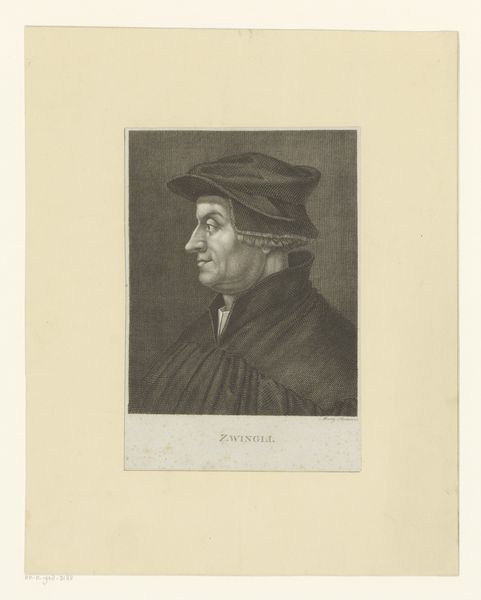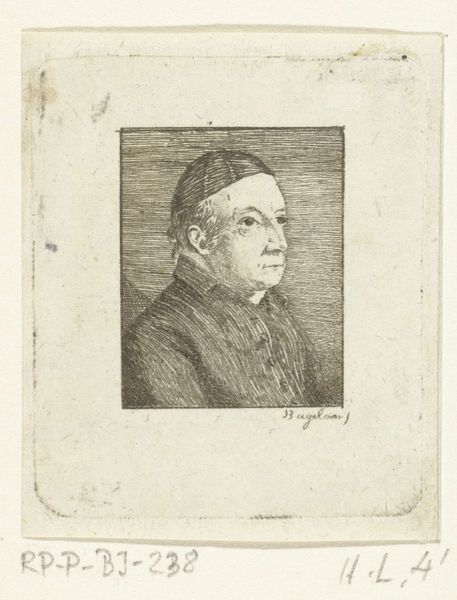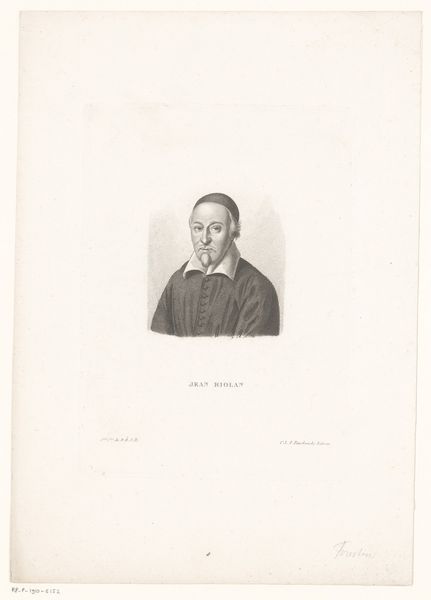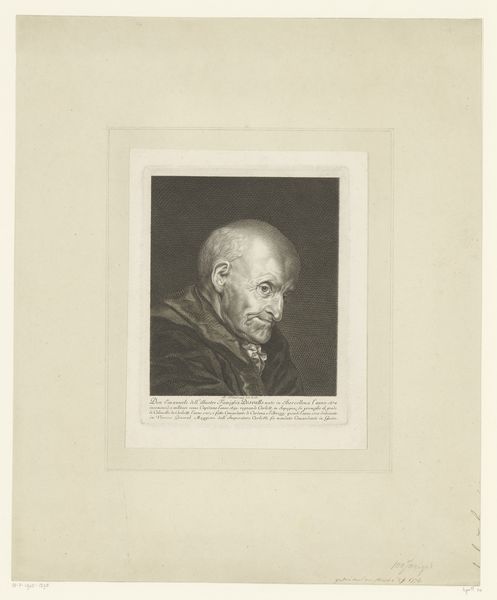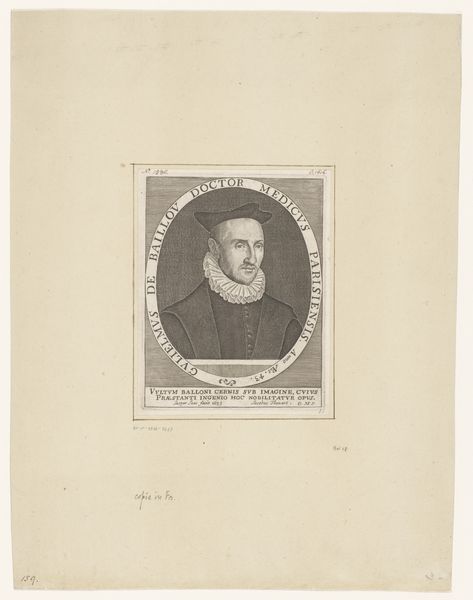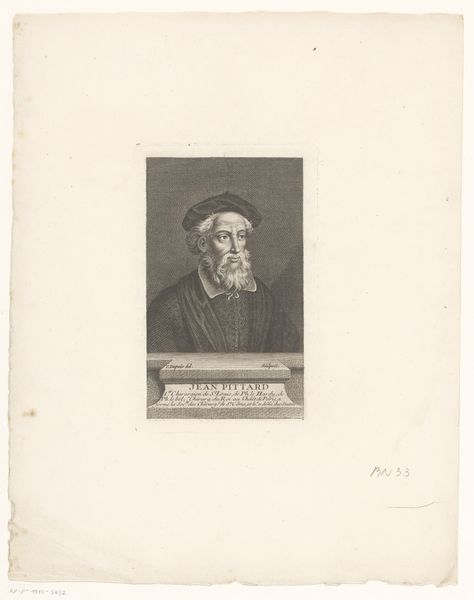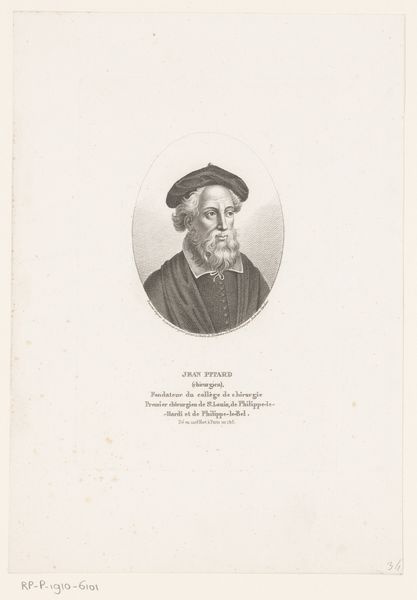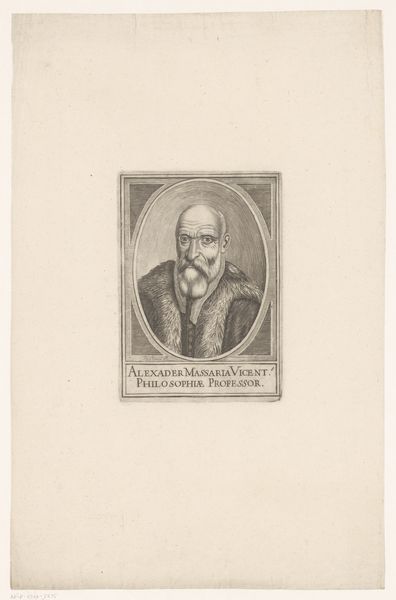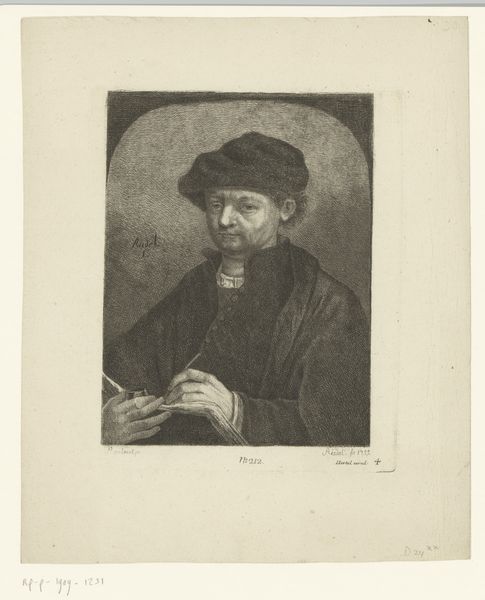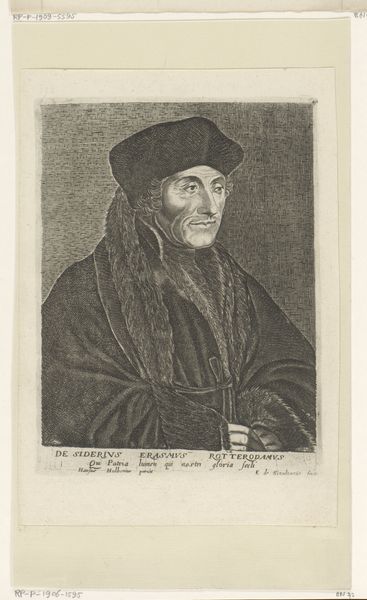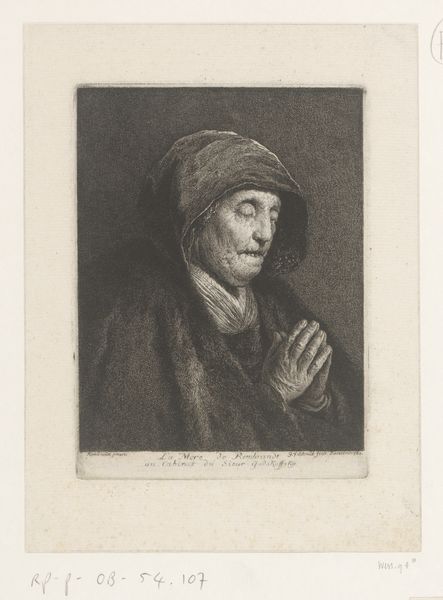
Dimensions: height 267 mm, width 208 mm
Copyright: Rijks Museum: Open Domain
Eugène Gaujean created this portrait of Jacob Muffel, a senator, using etching and engraving. Portraits, especially of the elite, were strategic statements of identity and power. Muffel’s fur-trimmed coat and hat signal his status and wealth, yet there is an emotional detachment in his gaze. Is Gaujean asking us to consider the man beyond the symbols of affluence? Gaujean lived in a time of enormous societal change, amidst the industrial revolution in Europe and social unrest. He was part of a generation grappling with questions of identity. Through his work as an engraver, Gaujean reproduced images, making art more democratic and accessible. Did this accessibility to art change the lives of people in the 19th century? Consider how portraiture operates as both a personal and public declaration. What does it mean to have your image reproduced and disseminated? How does it impact our understanding of self and society?
Comments
No comments
Be the first to comment and join the conversation on the ultimate creative platform.
